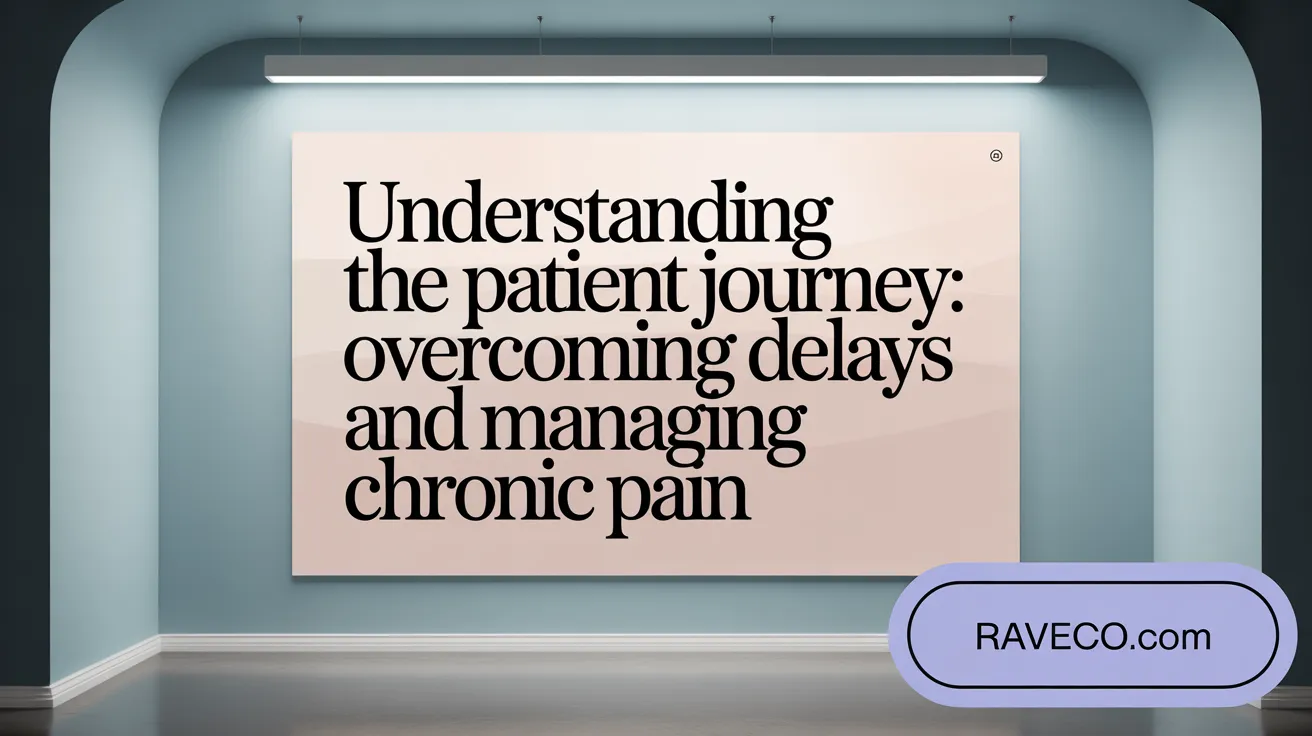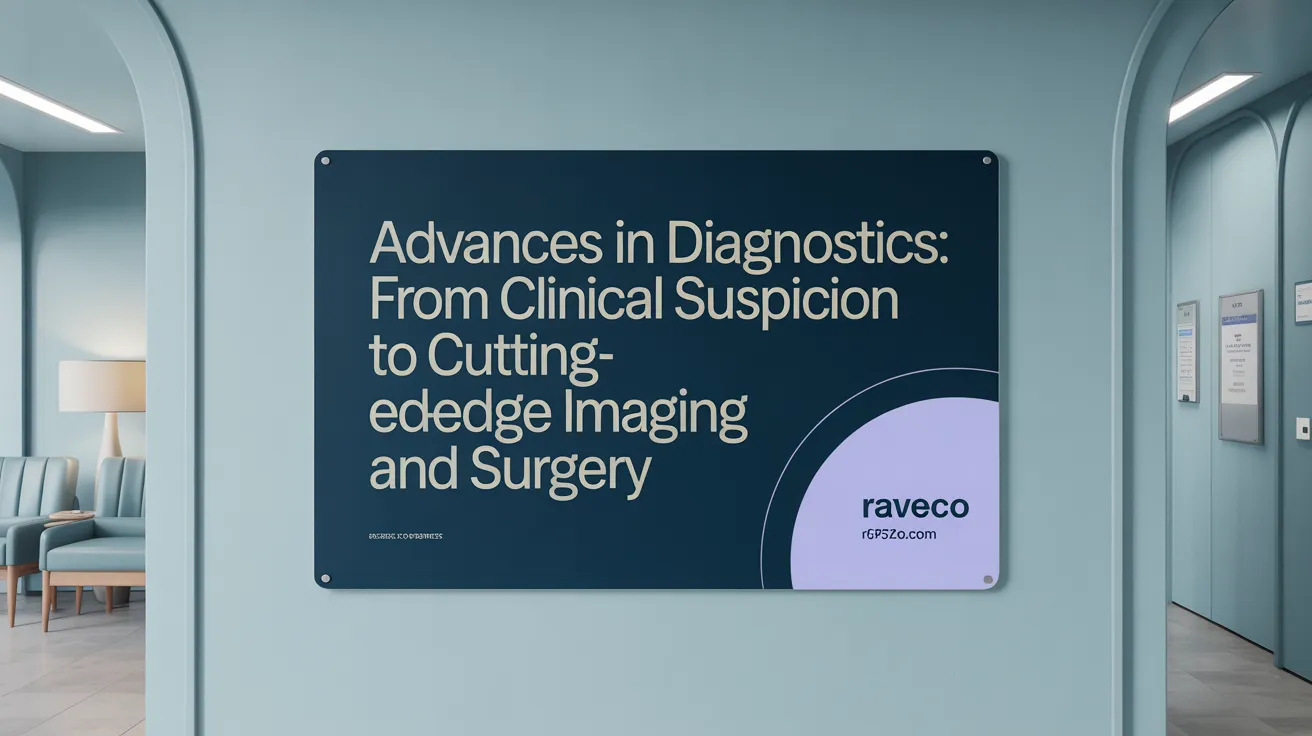Understanding VBAC: Clearing Up Common Misconceptions and Highlighting Realities

Understanding Endometriosis: A Prevalent Yet Complex Condition
What Is Endometriosis?
Endometriosis is a chronic condition where tissue similar to the lining inside the uterus grows outside it. This tissue can be found on ovaries, fallopian tubes, the space behind the uterus, peritoneum, and sometimes on other organs like the bladder, intestines, or even the lungs.
Who Does It Affect?
This condition affects about 1 in 10 women of reproductive age globally, most frequently diagnosed in women in their 20s and 30s. The true prevalence may be higher due to challenges in diagnosis.
Common Symptoms and Their Impact
Women with endometriosis often experience painful menstrual cramps, severe pelvic pain that can extend to the abdomen and back, heavy menstrual bleeding, and pain during sexual intercourse. Other symptoms include pain during urination or bowel movements, bloating, and sometimes infertility.
These symptoms can significantly affect quality of life, interfering with work, education, and emotional well-being. Chronic pelvic pain is one of the most distressing aspects, often leading to long delays in diagnosis.
Typical Locations of Endometrial Tissue
Endometrial-like tissue commonly grows in the space behind the uterus, on the ovaries, the fallopian tubes, and the peritoneal lining of the pelvis. Less commonly, it can spread to the rectum, bladder, intestines, diaphragm, vagina, or lungs, causing further complications.
This dispersed nature of endometrial tissue outside the uterus contributes to the complexity of diagnosing and managing the condition effectively.
Patient Journeys: The Challenge of Delayed Diagnosis and Chronic Pain

What are common patient experiences regarding diagnosis delays and symptoms of endometriosis?
Many patients with endometriosis face a frustrating and prolonged path to diagnosis. On average, the delay spans 8 to 11 years, a period during which symptoms are often normalized or overlooked by both patients and healthcare providers. This delay can result in feelings of relief upon diagnosis, but also overwhelm and anger, as the chronic pain and other symptoms had a significant, previously unaddressed impact on their lives (Nicole's story with endometriosis, Delayed Diagnosis of Endometriosis, Delayed diagnosis of endometriosis).
What symptoms do patients commonly report?
Patients frequently describe severe menstrual cramps (dysmenorrhea), heavy or irregular bleeding, chronic pelvic pain, and pain that occurs during intercourse or bowel movements. Many also report gastrointestinal symptoms such as pain during urination or defecation, bloating, and fatigue. These persistent symptoms can disrupt daily activities, negatively affecting education and work performance (Endometriosis symptoms, Symptoms of endometriosis, Symptoms of endometriosis).
Why is consultation with a specialist important?
Given the complexity and variability of endometriosis symptoms, consulting a gynecologist experienced in endometriosis is essential. Specialists can provide a thorough evaluation and understand the nuances that general practitioners may miss, which is crucial for early and accurate diagnosis (Consulting healthcare providers for endometriosis, Specialists in Queens NY, Consulting an Endometriosis Specialist).
What is the role of laparoscopy in diagnosis?
Laparoscopy remains the gold standard for confirming endometriosis. This minimally invasive surgical procedure allows direct visualization and biopsy of endometrial lesions, providing definitive diagnosis. Many patients report undergoing multiple imaging tests before ultimately having laparoscopy, which can finally provide clarity and guide effective treatment plans (Laparoscopy for endometriosis diagnosis, Laparoscopy for endometriosis, Laparoscopy in endometriosis).
Engaging with experienced healthcare professionals and support networks can improve coping and management during the often long and challenging journey toward diagnosis and treatment (Support groups for endometriosis, Managing endometriosis, Endometriosis Care in Queens NY).
Diagnostic Advances: From Clinical Evaluation to Minimally Invasive Procedures

Clinical Suspicion and the Importance of Patient History
Diagnosis of endometriosis often begins with careful clinical evaluation. Physicians rely heavily on a detailed patient history and symptom description—such as chronic pelvic pain, painful menstruation, pain during intercourse, and urinary or bowel discomfort—to suspect the disease. Early recognition of these symptoms facilitates timely referral for further testing, crucial given the typical diagnostic delay of 4 to 11 years (Living with Endometriosis: A 12-Year Journey, Endometriosis overview and diagnosis challenges.
Use of Imaging Techniques Such as Ultrasound and MRI
Transvaginal ultrasound (TVUS) serves as an initial noninvasive imaging modality. While most superficial endometriosis lesions remain undetected by imaging, TVUS is especially useful for identifying ovarian endometriomas and deep infiltrating endometriosis affecting organs like the bowel or bladder. Magnetic Resonance Imaging (MRI) complements ultrasound, particularly when organ involvement is suspected, offering detailed visualization to guide treatment planning (Noninvasive imaging for endometriosis diagnosis, MRI in detecting endometriosis).
Laparoscopy as Gold Standard
Despite advances in imaging, laparoscopy remains the definitive diagnostic tool. This minimally invasive surgical procedure allows direct visualization and biopsy of endometrial lesions throughout the pelvic cavity, confirming diagnosis and often enabling simultaneous surgical treatment such as lesion excision (Laparoscopy for diagnosis and treatment, Surgical management of endometriosis). Laparoscopy not only confirms endometriosis but also informs the extent and severity of disease, vital for personalized management (Endometriosis diagnosis methods.
Emerging Noninvasive Diagnostic Tools
Research is ongoing to develop novel, noninvasive diagnostics aiming to reduce the current dependence on surgery. These innovations include advanced imaging techniques, molecular biomarkers, and improved clinical algorithms integrating symptom profiles and imaging (Emerging diagnostic tools and personalized management strategies, Current and emerging therapies for endometriosis-associated pain. Such tools promise earlier diagnosis with less patient discomfort and more tailored treatment strategies (Endometriosis research challenges.
How do advanced healthcare technologies improve women's reproductive health services?
Advanced diagnostic technologies such as transvaginal ultrasound and MRI enable detection of deep infiltrating endometriosis involving organs like the bowel and bladder, facilitating targeted treatment. Laparoscopy, a minimally invasive surgical procedure, remains the gold standard for definitive diagnosis and treatment. Emerging noninvasive diagnostics and imaging enhancements hold promise to reduce delays in diagnosis and improve patient comfort, contributing to more precise and personalized care (Comprehensive endometriosis care, Endometriosis pain management and treatment.
Multidisciplinary and Personalized Care Approaches in Endometriosis Management

How does personalized care enhance the experience of women's health services?
Personalized care in endometriosis treatment customizes management plans to fit each woman's specific symptoms, medical background, and reproductive desires. Such tailored approaches enable targeted symptom relief and fertility preservation, moving away from one-size-fits-all treatments.
Incorporating multimodal treatment strategies
Effective management of endometriosis often requires a combination of medical, surgical, and complementary therapies for endometriosis. Hormonal treatments can reduce tissue growth and inflammation, while conservative laparoscopic surgery removes lesions to improve pain and fertility. Complementary options like physical therapy, acupuncture, and dietary modifications support symptom control and overall well-being.
Role of multidisciplinary teams
Optimal care involves collaboration among gynecologists, pain specialists, physical therapists, mental health professionals, gastroenterologists, and others. This team approach addresses the complex, systemic nature of endometriosis—managing hormonal, pain, reproductive, and psychological aspects holistically. Multidisciplinary centers, such as those in Queens, NY, exemplify this integrative care model.
Empowering patient education and shared decision-making
Educating women about the chronic and multifaceted nature of endometriosis encourages active participation in treatment choices. Personalized plans with multiple therapeutic options foster patient autonomy, ensuring decisions align with individual goals and values. Support groups and counseling further enhance coping and quality of life.
This comprehensive, patient-centered strategy not only improves clinical outcomes but also enhances satisfaction and long-term management of endometriosis.
Medical Treatment Options: Hormonal and Pain Management Therapies
Common Medications for Endometriosis
Medical treatment for endometriosis primarily aims to reduce pain and slow the growth of endometrial tissue.
- NSAIDs (Nonsteroidal anti-inflammatory drugs): Used to relieve menstrual cramps and pelvic pain by reducing inflammation.
- Hormonal contraceptives: Combined oral contraceptives, patches, or rings regulate menstrual cycles and suppress ovulation, reducing symptoms.
- GnRH agonists and antagonists: These suppress estrogen production, inducing a temporary menopausal state to halt disease progression.
- Progestins: These hormones curb the growth of endometrial tissue and alleviate pain.
- Aromatase inhibitors: Typically reserved for severe cases, they block estrogen synthesis to reduce lesion growth.
Benefits and Limitations
Hormonal therapies are effective in controlling symptoms, easing pelvic pain, and reducing menstrual bleeding. However, they are not cures and symptoms often recur when treatment stops. Their use also may be limited by side effects, which influence patient adherence.
Side Effects and Impact on Adherence
Common side effects of hormonal treatments include menopausal symptoms such as hot flashes, mood changes, and decreased bone density. These effects can challenge long-term adherence, requiring personalized treatment plans to balance symptom relief with tolerability. See more about side effects of hormonal treatments for endometriosis.
Pain Management Strategies
Beyond medication, pain management includes nonpharmacologic approaches like heat therapy (heating pads or warm baths), pelvic floor physical therapy, acupuncture, and dietary modifications with anti-inflammatory foods. These complementary therapies for endometriosis can enhance overall pain control and improve quality of life. For more on pain relief strategies and complementary therapies for endometriosis, see the linked resources.
Women with endometriosis benefit from a multimodal approach combining medication, lifestyle measures, and supportive therapies tailored to their needs and treatment goals. Learn about comprehensive endometriosis care and multimodal treatment strategies.
Surgical Interventions: Minimally Invasive to Advanced Techniques
What are laparoscopic excision or ablation procedures in endometriosis surgery?
Laparoscopic surgery is the gold standard for both diagnosing and treating endometriosis. It is a minimally invasive technique that uses small incisions and a camera to visualize and surgically remove or ablate endometrial lesions. This approach offers targeted removal of abnormal tissue while preserving the uterus and ovaries, which is crucial for women wishing to maintain fertility. Laparoscopy can improve pain and fertility outcomes and usually allows faster recovery compared to open surgery.
How does robotic-assisted surgery enhance endometriosis treatment?
Robotic-assisted laparoscopic surgery builds upon traditional laparoscopy by providing surgeons with enhanced precision, better visualization, and finer control of instruments. This technology is especially useful for complex cases where delicate anatomical structures are involved. Robotic surgery can aid in thorough excision of endometriosis growths with minimal tissue trauma, reducing complications and improving patient recovery times. This approach is part of advanced surgical techniques for severe endometriosis and is employed at centers such as the Endometriosis Center at NYU Langone Health.
What complex surgeries are performed for deep infiltrating endometriosis?
Deep infiltrating endometriosis (DIE) occurs when lesions penetrate deeply into surrounding organs like the bowel and bladder. Surgical management of DIE is often complex and requires specialized expertise. Procedures may include bowel resection, bladder nodule excision, or peritonectomy to remove extensive disease. These surgeries aim to relieve severe pain and improve organ function but carry increased risk. A multidisciplinary surgical team often collaborates to address endometriosis with multi-organ involvement, aligned with the multidisciplinary care models for endometriosis.
When is hysterectomy considered, and what are its effects?
Hysterectomy, often combined with ovary removal, is considered a last-resort treatment for severe, refractory endometriosis cases where other medical and surgical therapies have failed. While it may provide long-term symptom relief, hysterectomy results in loss of fertility and precipitates early menopause, leading to hormonal changes with potential long-term health implications. Due to its irreversible nature, this option requires careful consideration and patient counseling as noted in treatment options for severe endometriosis.
Surgical interventions for endometriosis range from minimally invasive laparoscopic excision to advanced robotic and complex organ-involving surgeries. Personalized treatment plans should balance symptom relief, fertility goals, and long-term health outcomes, with hysterectomy reserved for select severe cases as discussed in comprehensive endometriosis care.
Fertility Considerations in Endometriosis Care
How Does Endometriosis Affect Fertility?
Endometriosis can impact fertility by causing inflammation, scarring, and anatomical distortion in the reproductive organs, such as the fallopian tubes and ovaries. Approximately 40% of women with infertility have endometriosis, and while many women with the condition can conceive naturally, severe cases may lead to difficulties in becoming pregnant. For more detailed information, see Fertility and endometriosis and Endometriosis and infertility.
What Surgical and Medical Treatments Can Improve Fertility?
Surgical methods, particularly conservative laparoscopic removal of endometrial tissue, can improve fertility by restoring normal anatomy and reducing inflammation while preserving the uterus and ovaries. Surgery may also involve removal of endometriomas and hydrosalpinx, which can impede fertility. Medical therapies, including hormonal treatments like combined oral contraceptives or progestins, mainly aim to control symptoms but do not enhance fertility directly. Therefore, their use is generally to enable symptom management prior to fertility-focused interventions. Learn more about Surgical treatments for endometriosis and Hormonal therapies in endometriosis.
When Are Assisted Reproductive Technologies Like IVF Recommended?
For women with moderate to severe endometriosis or those who have not conceived after surgical and medical management, assisted reproductive technologies such as in vitro fertilization (IVF) are effective options. IVF bypasses tubal and pelvic factors influenced by endometriosis and offers improved pregnancy chances. Additional information on Fertility treatments for endometriosis and IVF for endometriosis-related infertility is available.
Why Is Fertility Preservation Important in Treatment Planning?
Given that some treatments for endometriosis, especially extensive surgeries or hysterectomy, may reduce ovarian reserve or result in early menopause, fertility preservation strategies should be considered. A personalized approach that balances symptom relief with reproductive goals is essential, involving multidisciplinary care and patient education. Explore approaches covered in Personalized approach to endometriosis and Endometriosis symptom management.
Breastfeeding and planning pregnancy with specialists familiar with endometriosis is recommended to optimize outcomes and quality of life for women affected by this condition, especially in areas like Queens, NY where specialized care is accessible. See resources on Endometriosis care in Queens NY and Comprehensive endometriosis care.
Emerging Therapies and Research: Hope for Future Management

New Pharmacological Agents Advancing Treatment
Emerging pharmacological therapies provide promising options beyond traditional hormonal treatments. Selective progesterone receptor modulators (SPRMs) are gaining attention for their ability to modulate hormone activity with fewer side effects. Linzagolix, recently approved by the UK’s NICE, is an oral GnRH antagonist offering effective symptom control potentially with add-back hormonal therapy to reduce menopausal-like effects. Other GnRH antagonists such as elagolix and relugolix offer oral administration options with varying degrees of symptom relief and side effect profiles.
Immune Therapies and Gene Editing Research
Research efforts are exploring immune therapies targeting the abnormal immune responses associated with endometriosis, aiming to reduce inflammation and lesion progression. Cutting-edge gene editing techniques, including CRISPR, represent potential future avenues to address the genetic and molecular basis of endometriosis. Stem cell therapies and immunomodulatory approaches are also under investigation in clinical trials, suggesting possibilities for more definitive treatments (research overview).
Nontraditional Therapies Gaining Attention
Complementary therapies for endometriosis such as cannabinoids are being explored for their anti-inflammatory and pain-relieving properties, offering an adjunct to conventional pain management. Dietary modifications focusing on anti-inflammatory foods rich in omega-3 fatty acids have shown potential benefits in reducing pelvic pain. Other complementary approaches like acupuncture and physical therapy remain popular among patients seeking holistic symptom relief.
Ongoing Clinical Trials and Research Centers in Queens, NY
Queens, NY, benefits from proximity to renowned research centers and specialized clinics offering participation in clinical trials focused on novel endometriosis therapies. Institutions like Northwell Health and NewYork-Presbyterian are active in advancing diagnostics and treatments through multidisciplinary research. Local efforts aim to improve early diagnosis, personalized medicine approaches, and to introduce innovative therapies to the community, enhancing patient outcomes and hope for better management options in the future.
Emotional Support and Community Resources for Women with Endometriosis
Psychological Impact of Endometriosis
Endometriosis often leads to significant psychological distress, including heightened levels of anxiety and depression. The chronic pain and infertility associated with the condition can disrupt daily life and emotional well-being, contributing to feelings of isolation and frustration. For more information, see Endometriosis and quality of life and Mental health effects of endometriosis.
Role of Support Groups and Peer Networks
Support groups and peer networks play a vital role in helping women with endometriosis cope emotionally. Connecting with others who understand the challenges provides validation, shared experiences, and practical coping strategies. These communities foster a sense of belonging and reduce feelings of loneliness. Learn more about support groups for endometriosis and Mental health strategies in endometriosis.
Importance of Compassionate, Empathetic Healthcare Providers
Compassionate and empathetic healthcare professionals are essential in managing the mental health of endometriosis patients. Providers who listen carefully, validate symptoms, and involve patients in decision-making help reduce emotional distress and build trust. This is emphasized in Patient autonomy in endometriosis treatment and Healthcare support for endometriosis patients.
Mental Health Therapies: Cognitive Behavioral Therapy and Mindfulness
Mental health strategies, including cognitive behavioral therapy (CBT) and mindfulness techniques, support emotional resilience. CBT helps patients reframe negative thoughts related to pain and uncertainty, while mindfulness promotes relaxation and stress management, improving quality of life. See more on Mental health services, Stress reduction techniques, and Meditation for stress.
Together, these emotional support resources and therapies form an important part of comprehensive care for women living with endometriosis. Additional comprehensive care strategies can be explored at Comprehensive endometriosis care and Endometriosis pain relief and quality of life.
The Unique Advantage of Woman-Led Healthcare Providers in Queens, NY

What types of services does a woman-led healthcare provider specializing in comprehensive obstetrics and gynecology typically offer?
Woman-led healthcare providers in Queens, NY, deliver an extensive range of obstetrics and gynecology services centered around women’s health. Their offerings include routine gynecological exams, comprehensive reproductive health services such as family planning, prenatal and postnatal care, and menopause management.
They also specialize in managing complex conditions like endometriosis by providing pain relief strategies, hormonal therapies, and minimally invasive surgical treatments. Diagnostic tools including biopsies and advanced imaging techniques like ultrasound and MRI are integral parts of their practice. Providers develop personalized care plans to meet the unique health needs of each woman, ensuring a holistic approach to wellness.
What are the advantages of choosing a woman-led healthcare provider for obstetrics and gynecology?
Choosing a woman-led healthcare provider offers distinct advantages, most notably an increased level of empathy, understanding, and open communication. These providers create trusting environments where patients feel comfortable discussing sensitive health issues, which is crucial for chronic conditions such as endometriosis that require ongoing management.
Additionally, woman-led practices often embrace the latest advances in women’s medicine, blending personalized care with innovative diagnostic and treatment options. They are more likely to incorporate multidisciplinary teams including gynecologists, surgeons, physical therapists, and mental health specialists. This coordinated care results in improved patient satisfaction and health outcomes.
Integration of personalized care and advanced treatments
These providers ensure access to advanced diagnostics and minimally invasive procedures, such as laparoscopies and robotic-assisted laparoscopic surgery, which reduce recovery times and risks. The integration of multidisciplinary specialists offers comprehensive support covering physical, emotional, and reproductive health. Through this patient-centered model, women in Queens receive the best available care tailored to their specific needs and life stages.
Toward Improved Lives: Comprehensive Care and Community Support for Endometriosis
Personalized, Multidisciplinary Care Benefits
Endometriosis requires a tailored approach that considers the unique symptoms, fertility goals, and life impacts of each patient. Multidisciplinary care teams—including gynecologists, pain specialists, gastroenterologists, physical therapists, and mental health professionals—collaborate to offer comprehensive treatment. This approach improves symptom management, pain relief, and fertility outcomes while addressing psychological well-being.
Importance of Early Diagnosis and Tailored Treatment
Early recognition of endometriosis symptoms is crucial to reduce the long diagnostic delay many experience. Prompt evaluation using clinical assessment, imaging, and laparoscopy facilitates timely intervention. Personalized treatment plans encompassing medication, surgery, and supportive therapies provide targeted relief and preserve fertility.
Advances in Diagnostics and Therapies
Imaging innovations like high-resolution ultrasound and MRI now assist in detecting deep infiltrating endometriosis, guiding precise surgical intervention. New hormonal treatments, such as GnRH antagonists with add-back therapy, offer symptom control with fewer side effects. Emerging therapies including immune modulation and nerve-targeted procedures hold promise in managing complex cases.
Advocacy and Support in Queens, NY
Raising awareness and improving access to specialized endometriosis care in Queens is essential. Support networks and patient education empower women to advocate for themselves and share experiences. Ongoing research at local centers contributes to developing innovative diagnostics and treatments, enhancing quality of life for Queens residents facing this chronic condition.




.png)